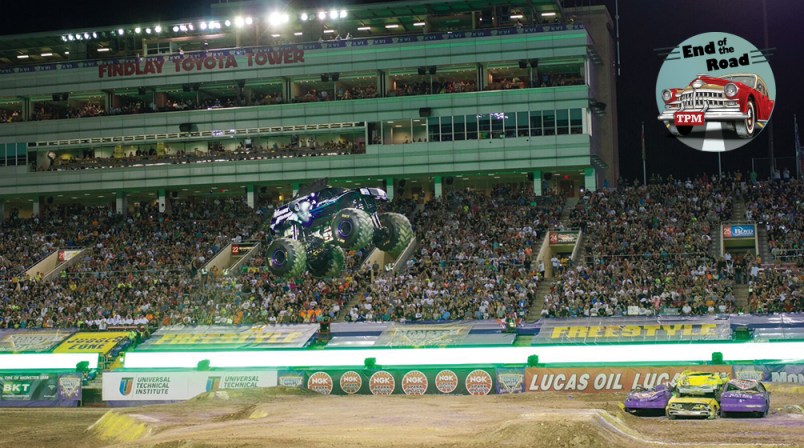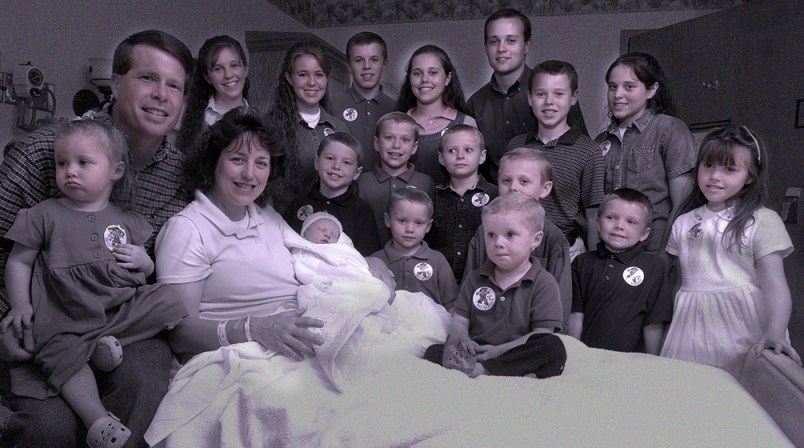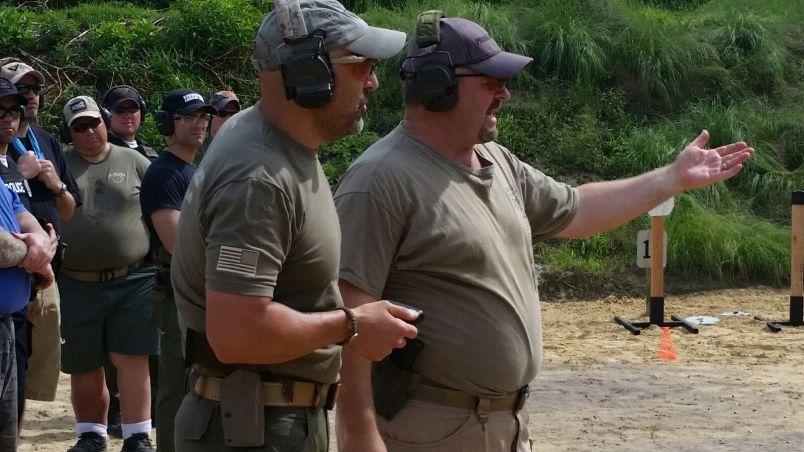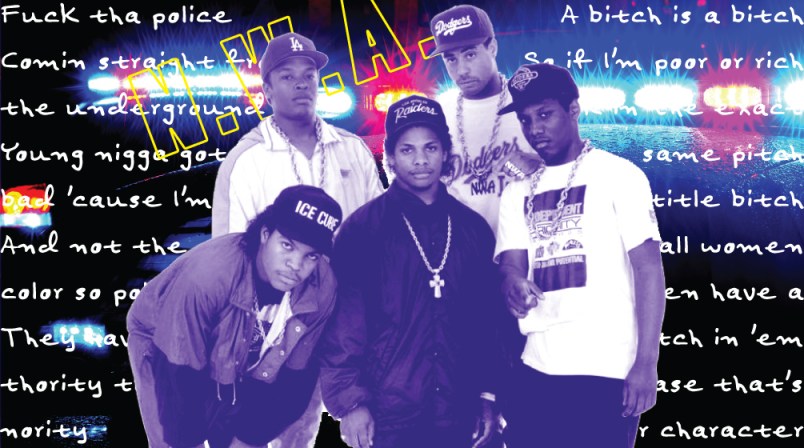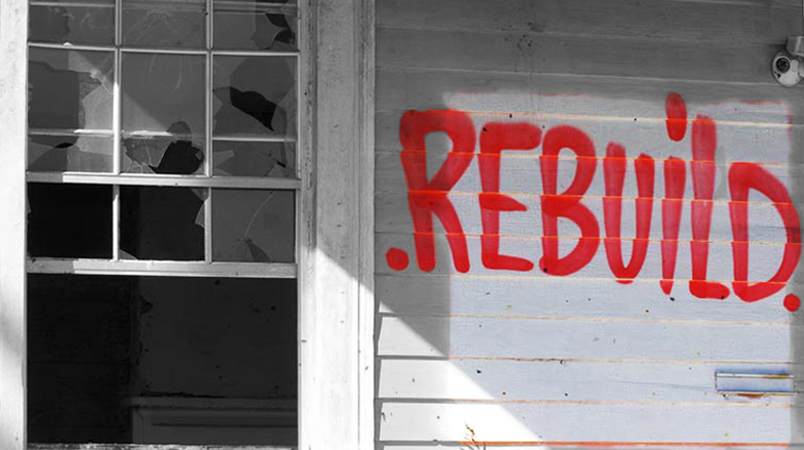This is the last part of a four-part series at The Slice called “End of the Road,” about America’s waning love affair with car culture. Read the series intro here, the second installment here, on the hell of being carless in America’s suburban sprawl, and the third installment here, on how hitchhiking died.
Photos by Liz Mak
To say that I have a bad feeling about the Monster Jam World Finals from day one wouldn’t be entirely forthcoming: The truth is, feelings of dread and anxiety have been building for months before I even step on the plane to Las Vegas, beginning when, shortly after signing a contract promising to cover the three-day spectacle, the West Central Region Communications Director of Feld Entertainment tells me I will not be granted media access to this, “the greatest weekend in motorsports for the entire family.” Something about an exclusive agreement with Fox Sports 1 and “limited availability.”
My friend Liz Mak, who I’d enlisted to be my photographer, and I should probably take this as our sign to quit. But we’ve both already purchased round trip plane tickets, hers from San Francisco, mine from New York. We’re going.
To a nebbishy New Yorker with no real knowledge of motorsports, or, for that matter, great weekends, seeing both the Superbowl of monster truck shows and the Entertainment Capital of the World for the first time holds the exotic and elusive promise of fun—at least, the high-octane, arena-filling kind one doesn’t experience much at home. I also have some vague notion that at a Monster Jam show, the destination of four million people annually—more than the number who attended Yankee games last year—one might discover something about auto culture in 2015. If, as Feld Entertainment CEO Kenneth Feld, claims, Monster Jam’s audience is “the real America,” then one must conclude that even in a post-recession era in which car sales are down, fuel prices are up, and young people are increasingly forgoing their first cars, our national love affair with motor vehicles is as strong as ever — at least in some parts of the country.
Ultimately, my enthusiasm gets the best of me. And so, in an act of what one can only describe as hubris, I board a westward-bound plane with a $200 three-day pass, a pack of earplugs, and zero journalistic credentials.

Dancing to the beat of “Who Let the Dogs Out,” young attendees show off their costumes at the Monster Mutt Dalmation Fashion Show.
Monster Jam is, perhaps, the only logical evolutionary destination of a phenomenon that began as one man’s advertising scheme 40 years ago. There is some debate about this, but it is widely believed that Bob Chandler of Ferguson, Missouri, created the first monster truck, Bigfoot, in 1975 from a souped-up Ford F250, largely to attract customers to his auto shop. One day, he had someone videotape him as he rolled the truck over two cars in a field outside of St. Louis, a moment as pivotal in the history of monster trucks as Orville Wright’s first shaky liftoff was in the history of aeronautics. Two years later, Chandler replicated the stunt, this time in front of about 70,000 people at Michigan’s Pontiac Silverdome, causing about 70,000 people to lose their shit simultaneously.
For a while, flattening cars was enough to drive entire stadiums wild, primarily as sideshows at mud bogging and truck pulling events. But in the late ‘80s, as monster trucks became slimmer and faster, they became the center of the show at races put on by organizations like the United States Hot Rod Association and TNT Motorsports. Since then, they’ve also starred in TV shows; my favorite of these is the 1990s one-season wonder, Monster Wars, which made a grab for WWE audiences with costumed, trash-talking mascots.
Safety improved, too—mostly notably with the introduction of the Remote Ignition Interrupter, a radio-controlled mechanism that can turn off a truck instantly, thus preventing them from accidentally squashing innocent spectators. (It only happened five times between 1992 and 2007, according to the Associated Press.) And they added nitrogen-filled shock absorbers in the suspension systems, which allowed them to make big jumps and not completely fall apart on the descent. “In the beginning, they were like steamrollers,” Monster Jam driver Tom Meents said of early monster trucks. “Now they are more jet fighters.” As such, they are now regularly employed to fly off ramps 30 feet into the air, do backflips, and otherwise perform feats that trucks of that size surely should not be able to perform.
While there are other monster truck promoters doing good business across the country, Monster Jam remains the most successful and best known, hosting 350 events every year. “Monster Jam took monster trucks to the mainstream, kind of like NASCAR did with circuit track,” Jeff Cook, president of the International Monster Truck Hall of Fame & Museum, told me. “Before Monster Jam you could mention to someone that you were going to a monster truck show and they would say, ‘What is a monster truck show?’”
Monster Jam had its first international tour in 2012; it had two international tours in 2013, and three the next year. In what is perhaps the most quintessential expression of American cultural imperialism ever made, Feld, who is now worth $1.8 billion, told the Associated Press, “We’re monster trucking the world.”

A superfan’s tattoos commemorate his favorite Monster Jam trucks.
DAY ONE
Monster Jam trucks have the approximate dimensions of adult African elephants. They weigh about 10,000 pounds. They stand 12’ tall and 12’ wide, with wheels 66” high and 43” wide. They burn 2.5 gallons of methanol per run (essentially, every two minutes) and generate 1,500 horsepower, more than three times that of the most heavy-duty pickups on the market. They are, in a word, scary, even when parked and lifeless, a fact I can attest to when I attend the first “Party in the Pits” on Thursday—a six-hour extravaganza of music, food and up-close time with the trucks and their drivers—on a field outside the Sam Boyd Stadium, a 30-minute drive from the Vegas Strip into the desert.
Adding to the fearsomeness of their stature is some of the trucks’ branding. Trucks like Gravedigger, El Diablo, Doom’s Day, Lethal Weapon, TNT, Wrecking Crew, Hitman, Destroyer, and Sniper are a clan marked by gnarled plastic teeth, painted skulls and flames, and, in their names, rather overt promises of personal injury and/or apocalypse. Taking them at their word, I inspect these vehicles at a distance of about two to three feet. The trucks that give me the greatest pause, however, are those that identify as agents of justice — trucks like Freedom Keeper, Solider Fortune, and Wheels of Freedom (complete with an image of the Declaration of Independence and Mt. Rushmore on its body). Cars may have long represented a certain sort of American freedom, but monster trucks are even more symbolically specific: Gigantic and gas guzzling to the point of absurdity, they represent America’s freedom to consume and destroy beyond any reasonable limits. Give me liberty or give me death, I write in my notebook.
Like elephants, monster trucks are, oddly, kind of adorable. At least a few of them are, particularly those—like Scooby Doo, Monster Mutt Dalmation, and Monster Mutt Rottweiler—that are styled like dogs, with floppy ears and tails. These loveable canine coaches are my first sign that Monster Jam is, in fact, designed largely for the enjoyment of children. Another sign quickly follows: The ubiquitous presence of small children and their parents.

At the “Party in the Pits,” a young girl dressed as Monster Mutt Dalmation holds a Monster Energy drink.
Having this realization is like going to a movie theater you think is going to be showing The Fast and The Furious, only to discover it is actually screening Cars —except that instead of quietly sneaking out of the theater, you have a non-refundable three day ticket and you are stuck in the middle of the desert. Perhaps it is the fate of all things big and dangerous—like big cats at the zoo—to eventually be declawed and made family friendly.
Determined not to recognize this as a problem, I brave the brutal sun and 90-degree heat in sweaty, self-righteous denial, expecting that around the next corner I’ll find some sign of the macho, slightly macabre culture I’d imagined. Instead, I stand in line behind several 10-year-olds and one grandma to get an airbrush tattoo of a monster truck on my left shoulder. I watch a toddler double fisting Hot Wheels Monster Jam trucks wreak havoc on a Monster Jam Dragon Blast Challenge playset. I see a tent full of kids coloring with markers. It is after this, with a palm to the face, that I finally acknowledge my second major planning fuck up. When you plan a superfun weekend in Sin City, I note, double-check first to see if it’s a kiddie cruise.
After several meandering hours of this, I am exhausted. The pervasive smell of something—The battalion of porta-potties? The foot-long corn dogs? The methanol?—is making me nauseous. I find Liz sitting down on the ground, taking refuge in the shade of the chocolate-covered frozen banana stand. We sit in silence for a few minutes while “Blurred Lines” blasts for what feels like the tenth time today.
“I’m very unhappy,” Liz finally confesses.

Monster Jam events attract more than 4 million attendees annually – outnumbering the turnout at last year’s Yankees games.
DAY TWO
Each morning, our journey to Monster Jam begins with a 30-minute walk down the Strip from our hotel to the free bus that takes us to the stadium. These treks through this supersized, amplified town are apt preparation for our time at Monster Jam. On our way, we see the world’s largest ferris wheel, the country’s largest indoor theme park, and a handful of the world’s largest hotels. We see red-faced men and women drinking out of novelty cups taller than children emblazoned with the timeless American motto: SIZE MATTERS. The Entertainment Capital of the World, I discover, is more like Times Square—every New Yorker’s least favorite place—than I had anticipated.
Walking through what feels like a continuation of this carnival — yet another Party in the Pits — I decide it is time to speak to another adult human, in hopes of finding a window into the edgier, darker side of monster truck culture. Tracking one down isn’t easy. A lot of the adults I talk to are parents who only have heartwarming tales to tell me about how much Monster Jam means to their little monsters.
Suddenly, coming out of the airbrush tattoo tent, I spot a man, who, with his long grey hair and full beard, skull ring and Gravedigger jersey, looks like a promising candidate. (In fact, he looks a bit like Rob Zombie in about 10 years). He is, I suspect, just the man I’m searching for, so I ask him how he got into Monster Jam.
“When I was 14, 15 years old, I was declared dead twice in an auto wreck,” he tells me. “The make, year and model of the vehicle were the same as Dennis Anderson’s original Gravedigger truck.”
I ask the man, whose name is William McFarland, what he likes about Monster Jam, expecting something equally dark and interesting. “This is the best family show, I think, in any of the racing circuits,” he says. I am dismayed.
McFarland, it turns out, has gotten into the family spirit, too. Kids at Monster Jam events, seeing his jersey and generally spooky appearance, have a habit of thinking that he drives the Gravedigger truck. “Every time the kids are confused thinking that I’m a driver, I have to explain to them that I’m not,” he says. So as to not entirely disappoint them, he tells me, he’s been printing off coloring pages from the Monster Jam website and handing them out to kids at the shows.
At this point, I give up. Everyone at this event is a fucking saint. Even Rob Zombie is like Santa Claus. Car advertisers may still be selling the dream of uninhibited American masculinity, but Monster Jam is taking a decidedly different approach to its product. With its promise of family togetherness and wholesomeness, it sells monster trucks more like mini vans than Mustangs.

Online, the Monster Jam World Finals are billed as “the greatest weekend in motorsports for the entire family.”
Monster Jam racing goes like this: Sounding much like Star Wars X-Wing starfighters, two trucks scream out of separate alleys on one side of a dirt track at about 70 miles an hour, make a sharp U-turn at the other end, and then sail over a ramp across the finish line. It takes about 16 seconds—a few seconds longer if you’re slow. The Monster Jam racing championship consists of watching this 31 times in a row. During brief intermissions, a truck drives slowly around the stadium while pretty young women shoot Monster Jam tee shirts, and occasionally some Monster Jam footballs, into the crowd. The whole thing is over in two hours.
At some point, I begin to think about my fellow Monster Jam attendees. Who are these people? According to Feld’s own reports, about two-thirds are male, about two-thirds are white, their average household income is $59,400 and about a third are under the age of 12. Taking an informal survey of the people around me, I estimate that approximately 100 percent of the children have a Hot Wheels miniature of one of the trucks on the track. This is not only an important part of Monster Jam’s business model — at $10 a pop, these toys must make them a killing —but an important part of its appeal. Many of the children here, like many of the children at zoos, are not simply seeing a monster truck, they are seeing the big version of their favorite plaything. For the adults, I imagine the titantic, imposing vehicles fulfill another type of fantastical longing —for a time in American history and automotive manufacturing when there was no such thing as a Prius, when nobody talked about peak oil, when bigger was unquestionably better. Like many other types of entertainment, Monster Jam is wish fulfillment writ large.
For me though, they are simply monster trucks, and after about the dozenth time watching them watching them do their largely uneventful sprint around the track, their appeal is lost on me.

Debuting just this year, the Soldier Fortune Monster Jam truck pays homage to those serving in the U.S. Military.
After the races, Liz and I are at the height of our misery. We stop at a food court for dinner on the Strip where I order a $4.50 “jumbo” slice of “New York” pizza, which, unlike literally everything else this weekend, is not anywhere near jumbo-sized. Later, we pass the country’s largest Louis Vuitton store, and as I watch the watery plumes of the famous Bellagio fountains leap into the air, Elvis sings “Viva Las Vegas.” I despair.
Our hotel—a palace for child-centric amusements, Circus Circus, whose façade is a massive big top—offers little reprieve from Monster Jam. When we return there, Liz heads off in search of a sleeping pill, while I go to the casino’s bar for a beer. As other patrons dance to Iggy Azalea’s “Fancy” I strike up a conversation with the only other person there by himself, a large, drunk man who, like a fairy godmother, seems to have appeared precisely when I need him. He’s just gotten off the plane, he says, from the Dominican Republic, where he’s been working for the past year, to visit his daughter, who he sees once a month. In the DR, he tells me, he’s had several girlfriends at the same time, and life generally is a lot better than it is here.
Is there anything he misses about the United States?
“The Sausage Biscuits at McDonalds,” he tells me.
Anything else?
“No, just the Sausage Biscuits.”
FINAL DAY
We arrive Saturday to find that the track has been transformed overnight, from a largely flat canvas to a minefield of jumps painted purple and yellow. The freestyle championship is the last and most eagerly anticipated event of the finals, and as I watch it, I can see why.
Freestyle runs, unlike relatively tame races, are total carnage. For a minute and a half (with a 30-second bonus period) or until their trucks give out, drivers jump and crash and wreck unashamedly. As the trucks repeatedly slam to the ground, their bodies crumble bit by bit, their wheels sometimes spin off their axles, and the track itself is ruined. The best applause comes when trucks accidentally tip over onto their sides, only to be resurrected, through a heroic gunning of the engine, allowing the destruction to continue. When the truck actually rolls over for good and a yellow Cat vehicle must haul it off the track like an injured football player on a stretcher, there is genuine disappointment. Audiences want the trucks bloodied, but not entirely beaten.
It is impossible not to like this, I decide. In fact, it would be unhealthy not to like this.

About a third of Monster Jam attendees are under the age of 12.
Why do we watch sports? For the victories? The sheer human, physical achievement? The writer Adam Sternbergh thinks an explanation lies in the epic collapse, “an event that’s bewildering in its unlikelihood and ruinous in its effect,” but which also leaves us “entirely unscarred,” unlike so many of the dramas of our actual lives. Walking away from the calamities of the sports arena, he writes, we are left with “some lingering life lesson or other: about resilience, or the eternal promise of renewal, or simply the absurdity of rooting for someone you’ve never met to hit a ball with a stick.”
Finding relief in a fun miniature model of destruction is an essential American pastime that’s as old as 19th century staged train crashes, spectacles that promised attendees the experience of “a railroad horror” at a safe distance, “free from all danger.” Today, whether we get it from Monster Jam or horror movies or some other diversion, I think we need performances like this to survive. I, for one, need it to survive this weekend.
In sports like baseball, collapses play out in slow motion, as, in 2011, when the Boston Red Sox blew a nine-game lead and missed the playoffs. A Monster Jam freestyle show is so appealing because it offers a series of epic collapses at an extremely accelerated pace: In about the same time as a movie trailer, one can witness the glory of a perfectly executed backflip and, in the next instant, the devastation of a truck completely falling apart. As in other spectator sports, disaster is domesticated, but here, it’s uniquely packaged into bite-sized dramas, ones made all the more digestible by their stars—our beloved automobiles, dressed up as cartoonish heroes and villains.
When you start embracing it as an exercise in catharsis, Monster Jam is a lot more fun. At some point, Liz puts down her camera and I put down my notebook. When a truck saves itself from a rollover, I cheer with everybody else. When a human Wave reaches me, for the first time in my life, I leap out of my seat and throw my hands in the air. When the Overkill Evolution truck lands its second backflip in a single run, I feel almost choked up.
For the next few hours, amid the destruction, the chaos and the ruination, I forget the about my terrible planning, our terrible trip. In fact, I feel pretty great.
Jordan G. Teicher is a freelance journalist based in New York City. Follow him on Twitter.
Liz Mak is a writer and multimedia producer living in Oakland. She makes radio at KALW, a local public radio station in San Francisco. Find her on twitter @elizabethjmak.





